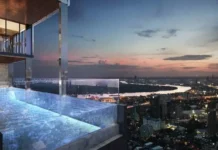Agra Fort was constructed by one of the greatest Mughal Emperors Akbar in the 15th century. The fort took in excess of 4000 specialists and eight years of hard work to be completed. Knowing the noteworthiness of its area, Akbar manufactured the fort to make it the primary home of the Mughals.
The fortification stayed as the primary home of the sovereigns having a place with the Mughal line until the year 1638. The fortress houses various great structures like the Jahangir Mahal, Khas Mahal, Diwan-I-Khas, Diwan-I-Am, Machchhi Bhawan and Moti Masjid. In 1638, the capital of the Mughal tradition was moved from Agra to Delhi, causing the
Agra Fort to lose its status as the principal living arrangement of the Mughal heads. The fort is isolated from its nearby landmark Taj Mahal by simply 2.5 kilometers. Regularly depicted as the walled city, Agra Fort is a UNESCO World Heritage site. Today, the fort is a noteworthy place of interest and draws in numerous visitors from everywhere throughout the world.
1. History of Agra Fort.
Agra Fort is known for its rich history. The fortress has been possessed by numerous sovereigns and rulers before, and during that period, the fort passes through many changes in the construction. Everything started in the year 1526 when the principal skirmish of Panipat was battled among Babur and Ibrahim Lodi of the Lodi administration. At the point when Babur crushed Ibrahim Lodi, he made the fort as his royal residence. He made changes in the fort by building a huge step wall inside and thereafter the Fort has become an important part of Mughal’s lives. Truth be told, Babur’s successor, Humayun’s crowning liturgy occurred at the stronghold in the year 1530.
Before long heads from different lines began peering toward the fortification and endeavors to prevail upon the equivalent started. In 1540, Sher Shah Suri of the Sur Empire pursued a war against Humayun and vanquished him at Bilgram.
Sher Shah Suri assumed control over the responsibility for fortress from Humayun and rolled out minor improvements to it, which shows his own love for architecture. The fortification remained with the sovereigns of the Sur administration for the next 15 years. In 1555, Humayun figured out how to recover Agra and with the stronghold on fort also.
But after a year, Hemu Vikramaditya, the general and military administrator of Adil Shah Suri caught Agra. He sought after the escaping armed force to Delhi and the Battle of Tughlaqabad resulted among him and Tardi Beg Khan, the military administrator of the Mughals.
Tardi Beg Khan lost the fight convincingly and Hemu Vikramaditya delegated himself the lord. Be that as it may, on November 5, 1556, and scarcely a month into the authority of Hemu, Akbar, alongside his military, walked into Delhi and crushed the powers of Hemu. The fortress by and by had a place with the Mughals, however, it was quickly deteriorating. In those days, it was known as Badalgarh and worked with blocks alone. Understanding its verifiable and situational hugeness, Akbar chose to modify it with red sandstone.
During the rule of Shah Jahan, the fort was adjusted extensively and took the present structure. Shah Jahan redesigns a portion of the structures inside the fort and remade it according to his own architecture taste. During the mid-seventeenth century, the post was caught by the Maratha Empire.
During this period, the stronghold saw numerous proprietors including different Maratha rulers and their foes which incorporated a large group of Mughal rulers. In 1761, the Marathas experienced monstrous destruction because of Ahmad Shah Durrani, author of the Durrani Empire. The rulers of the Durrani administration made the fort as their home until 1785. In 1785, the fort was recaptured by the Marathas under the rule of Mahadji Shinde.
The Marathas at that point lost their fight against the British in the Second Anglo-Maratha War with the fort as well. The British at that point appreciated the solace of the post until it was given over to the administration of India in 1947.
2. The Architecture of the Fort.
The fort was first made of small bricks. Later, in the reign of Akbar, the whole fortress was assembled utilizing the red sandstone. This appearance of the fortification experienced a noteworthy change during the reign of Shah Jahan. In contrast to his granddad, Shah Jahan was stricken by the excellence of white marble. Thus, he pulverized numerous structures inside the fort, just to remake them utilizing white marble.
Shah Jahan was made to spend his last days in the Musamman Burj of the Agra Fort, which was worked by him. The Musamman Burj is situated on the left of the Khas Mahal. It is an excellent octagonal pinnacle with an open structure. It is said that Shah Jahan used to see the Taj Mahal from this very spot.
At the point when the British assumed control over the responsibility for Fort, considerably more changes were made to the fort. They devastated numerous structures and buildings with chronicled significances, referring to political reasons and for raising sleeping shelter. The structures that figured out how to endure grandstand the genuine intricacy and workmanship of Mughal architecture.
Fine instances of the Mughal architectures inside the fort are the Delhi Gate, Amar Singh Gate, and the Bengali Mahal. These structures speak to Mughal engineering, but on the other hand, are fine instances of Akbari design which is also called Indo-Islamic architecture. Among these structures, the Delhi Gate is considered as the most noticeable for its fine architecture plan. Indeed, even today, it is viewed as one of Akbar’s showstoppers.
3. Things to See in Agra Fort.
As we all know that Agra Fort is the finest combination of multiple architectural styles such as Bengali, Gujarati, British and Mughal and there are so many structures of these styles still do exists.
- Jahangir’s Hauz
- Shah Jahani Mahal
- Akbar’s Mahal
- Bengali Mahal
- Nagina Masjid
- Babar’s Baoli
- Diwan-e-Am
- Ghazni Gate
4. Best Time to Visit Agra Fort.
Most of the tourists and locals prefer winter season to visit this stunning beauty due to its pleasant climate conditions or to avoid the warmth of the sun. All the way, the fort is open for tourists from sunrise to sunset and mostly crowded during the peak season.
So this what every tourist know before visiting the Agra Fort. If you want to know more about this beauty then see these amazing facts of Agra Fort which most of the tourists don’t know even after visiting the fort.






































































